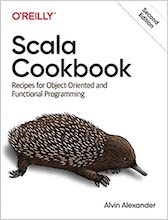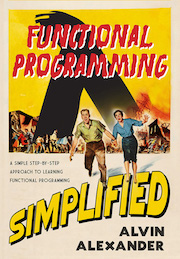jfreechart example source code file (CrosshairState.java)
The jfreechart CrosshairState.java source code
/* ===========================================================
* JFreeChart : a free chart library for the Java(tm) platform
* ===========================================================
*
* (C) Copyright 2000-2008, by Object Refinery Limited and Contributors.
*
* Project Info: http://www.jfree.org/jfreechart/index.html
*
* This library is free software; you can redistribute it and/or modify it
* under the terms of the GNU Lesser General Public License as published by
* the Free Software Foundation; either version 2.1 of the License, or
* (at your option) any later version.
*
* This library is distributed in the hope that it will be useful, but
* WITHOUT ANY WARRANTY; without even the implied warranty of MERCHANTABILITY
* or FITNESS FOR A PARTICULAR PURPOSE. See the GNU Lesser General Public
* License for more details.
*
* You should have received a copy of the GNU Lesser General Public
* License along with this library; if not, write to the Free Software
* Foundation, Inc., 51 Franklin Street, Fifth Floor, Boston, MA 02110-1301,
* USA.
*
* [Java is a trademark or registered trademark of Sun Microsystems, Inc.
* in the United States and other countries.]
*
* -------------------
* CrosshairState.java
* -------------------
* (C) Copyright 2002-2008, by Object Refinery Limited.
*
* Original Author: David Gilbert (for Object Refinery Limited);
* Contributor(s): -;
*
* Changes
* -------
* 24-Jan-2002 : Version 1 (DG);
* 05-Mar-2002 : Added Javadoc comments (DG);
* 26-Sep-2002 : Fixed errors reported by Checkstyle (DG);
* 19-Sep-2003 : Modified crosshair distance calculation (DG);
* 04-Dec-2003 : Crosshair anchor point now stored outside chart since it is
* dependent on the display target (DG);
* 25-Feb-2004 : Replaced CrosshairInfo --> CrosshairState (DG);
* ------------- JFREECHART 1.0.x ---------------------------------------------
* 13-Oct-2006 : Fixed initialisation of CrosshairState - see bug report
* 1565168 (DG);
* 06-Feb-2007 : Added new fields and methods to fix bug 1086307 (DG);
* 26-Jun-2008 : Now tracks dataset index (DG);
*
*/
package org.jfree.chart.plot;
import java.awt.geom.Point2D;
/**
* Maintains state information about crosshairs on a plot between successive
* calls to the renderer's draw method. This class is used internally by
* JFreeChart - it is not intended for external use.
*/
public class CrosshairState {
/**
* A flag that controls whether the distance is calculated in data space
* or Java2D space.
*/
private boolean calculateDistanceInDataSpace = false;
/** The x-value (in data space) for the anchor point. */
private double anchorX;
/** The y-value (in data space) for the anchor point. */
private double anchorY;
/** The anchor point in Java2D space - if null, don't update crosshair. */
private Point2D anchor;
/** The x-value for the current crosshair point. */
private double crosshairX;
/** The y-value for the current crosshair point. */
private double crosshairY;
/**
* The dataset index that the crosshair point relates to (this determines
* the axes that the crosshairs will be plotted against).
*
* @since 1.0.11
*/
private int datasetIndex;
/**
* The index of the domain axis that the crosshair x-value is measured
* against.
*
* @since 1.0.4
*/
private int domainAxisIndex;
/**
* The index of the range axis that the crosshair y-value is measured
* against.
*
* @since 1.0.4
*/
private int rangeAxisIndex;
/**
* The smallest distance (so far) between the anchor point and a data
* point.
*/
private double distance;
/**
* Creates a new <code>CrosshairState instance that calculates
* distance in Java2D space.
*/
public CrosshairState() {
this(false);
}
/**
* Creates a new <code>CrosshairState instance.
*
* @param calculateDistanceInDataSpace a flag that controls whether the
* distance is calculated in data
* space or Java2D space.
*/
public CrosshairState(boolean calculateDistanceInDataSpace) {
this.calculateDistanceInDataSpace = calculateDistanceInDataSpace;
}
/**
* Returns the distance between the anchor point and the current crosshair
* point.
*
* @return The distance.
*
* @see #setCrosshairDistance(double)
* @since 1.0.3
*/
public double getCrosshairDistance() {
return this.distance;
}
/**
* Sets the distance between the anchor point and the current crosshair
* point. As each data point is processed, its distance to the anchor
* point is compared with this value and, if it is closer, the data point
* becomes the new crosshair point.
*
* @param distance the distance.
*
* @see #getCrosshairDistance()
*/
public void setCrosshairDistance(double distance) {
this.distance = distance;
}
/**
* Evaluates a data point and if it is the closest to the anchor point it
* becomes the new crosshair point.
* <P>
* To understand this method, you need to know the context in which it will
* be called. An instance of this class is passed to an
* {@link org.jfree.chart.renderer.xy.XYItemRenderer} as
* each data point is plotted. As the point is plotted, it is passed to
* this method to see if it should be the new crosshair point.
*
* @param x x coordinate (measured against the domain axis).
* @param y y coordinate (measured against the range axis).
* @param transX x translated into Java2D space.
* @param transY y translated into Java2D space.
* @param orientation the plot orientation.
*
* @deprecated Use {@link #updateCrosshairPoint(double, double, int, int,
* double, double, PlotOrientation)}. See bug report 1086307.
*/
public void updateCrosshairPoint(double x, double y,
double transX, double transY,
PlotOrientation orientation) {
updateCrosshairPoint(x, y, 0, 0, transX, transY, orientation);
}
/**
* Evaluates a data point and if it is the closest to the anchor point it
* becomes the new crosshair point.
* <P>
* To understand this method, you need to know the context in which it will
* be called. An instance of this class is passed to an
* {@link org.jfree.chart.renderer.xy.XYItemRenderer} as
* each data point is plotted. As the point is plotted, it is passed to
* this method to see if it should be the new crosshair point.
*
* @param x x coordinate (measured against the domain axis).
* @param y y coordinate (measured against the range axis).
* @param domainAxisIndex the index of the domain axis for this point.
* @param rangeAxisIndex the index of the range axis for this point.
* @param transX x translated into Java2D space.
* @param transY y translated into Java2D space.
* @param orientation the plot orientation.
*
* @since 1.0.4
*/
public void updateCrosshairPoint(double x, double y, int domainAxisIndex,
int rangeAxisIndex, double transX, double transY,
PlotOrientation orientation) {
if (this.anchor != null) {
double d = 0.0;
if (this.calculateDistanceInDataSpace) {
d = (x - this.anchorX) * (x - this.anchorX)
+ (y - this.anchorY) * (y - this.anchorY);
}
else {
double xx = this.anchor.getX();
double yy = this.anchor.getY();
if (orientation == PlotOrientation.HORIZONTAL) {
double temp = yy;
yy = xx;
xx = temp;
}
d = (transX - xx) * (transX - xx)
+ (transY - yy) * (transY - yy);
}
if (d < this.distance) {
this.crosshairX = x;
this.crosshairY = y;
this.domainAxisIndex = domainAxisIndex;
this.rangeAxisIndex = rangeAxisIndex;
this.distance = d;
}
}
}
/**
* Evaluates an x-value and if it is the closest to the anchor x-value it
* becomes the new crosshair value.
* <P>
* Used in cases where only the x-axis is numerical.
*
* @param candidateX x position of the candidate for the new crosshair
* point.
*
* @deprecated Use {@link #updateCrosshairX(double, int)}. See bug report
* 1086307.
*/
public void updateCrosshairX(double candidateX) {
updateCrosshairX(candidateX, 0);
}
/**
* Evaluates an x-value and if it is the closest to the anchor x-value it
* becomes the new crosshair value.
* <P>
* Used in cases where only the x-axis is numerical.
*
* @param candidateX x position of the candidate for the new crosshair
* point.
* @param domainAxisIndex the index of the domain axis for this x-value.
*
* @since 1.0.4
*/
public void updateCrosshairX(double candidateX, int domainAxisIndex) {
double d = Math.abs(candidateX - this.anchorX);
if (d < this.distance) {
this.crosshairX = candidateX;
this.domainAxisIndex = domainAxisIndex;
this.distance = d;
}
}
/**
* Evaluates a y-value and if it is the closest to the anchor y-value it
* becomes the new crosshair value.
* <P>
* Used in cases where only the y-axis is numerical.
*
* @param candidateY y position of the candidate for the new crosshair
* point.
*
* @deprecated Use {@link #updateCrosshairY(double, int)}. See bug report
* 1086307.
*/
public void updateCrosshairY(double candidateY) {
updateCrosshairY(candidateY, 0);
}
/**
* Evaluates a y-value and if it is the closest to the anchor y-value it
* becomes the new crosshair value.
* <P>
* Used in cases where only the y-axis is numerical.
*
* @param candidateY y position of the candidate for the new crosshair
* point.
* @param rangeAxisIndex the index of the range axis for this y-value.
*
* @since 1.0.4
*/
public void updateCrosshairY(double candidateY, int rangeAxisIndex) {
double d = Math.abs(candidateY - this.anchorY);
if (d < this.distance) {
this.crosshairY = candidateY;
this.rangeAxisIndex = rangeAxisIndex;
this.distance = d;
}
}
/**
* Returns the anchor point.
*
* @return The anchor point.
*
* @see #setAnchor(Point2D)
*
* @since 1.0.3
*/
public Point2D getAnchor() {
return this.anchor;
}
/**
* Sets the anchor point. This is usually the mouse click point in a chart
* panel, and the crosshair point will often be the data item that is
* closest to the anchor point.
* <br>
Other jfreechart examples (source code examples)Here is a short list of links related to this jfreechart CrosshairState.java source code file: |
 The search page
The search page Other jfreechart source code examples at this package level
Other jfreechart source code examples at this package level Click here to learn more about this project
Click here to learn more about this project
